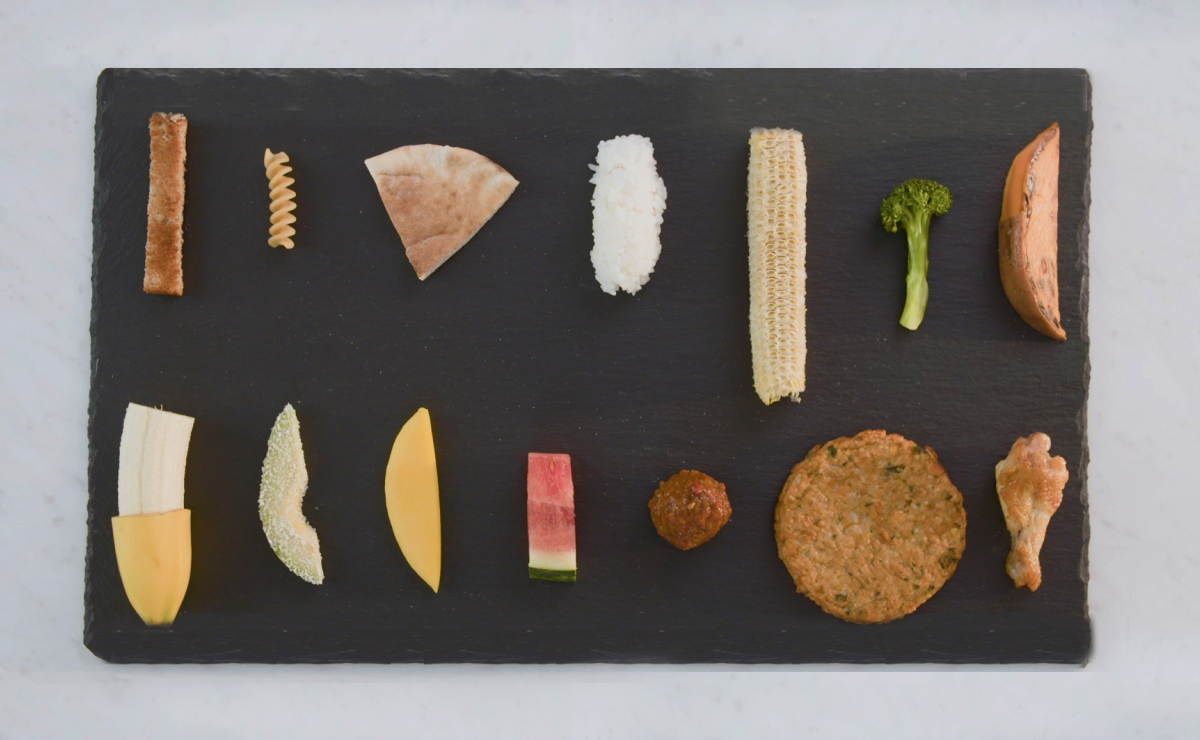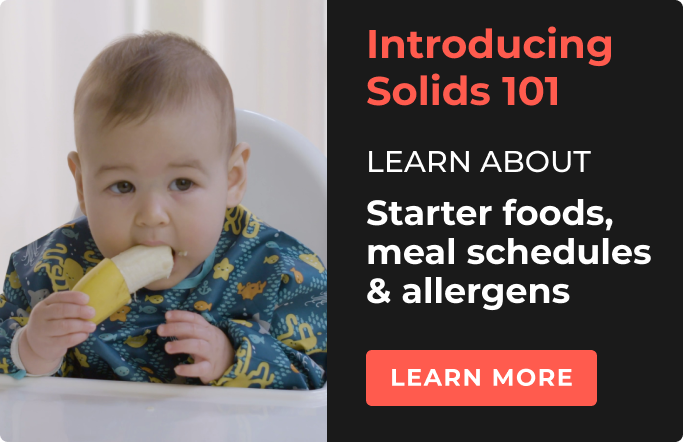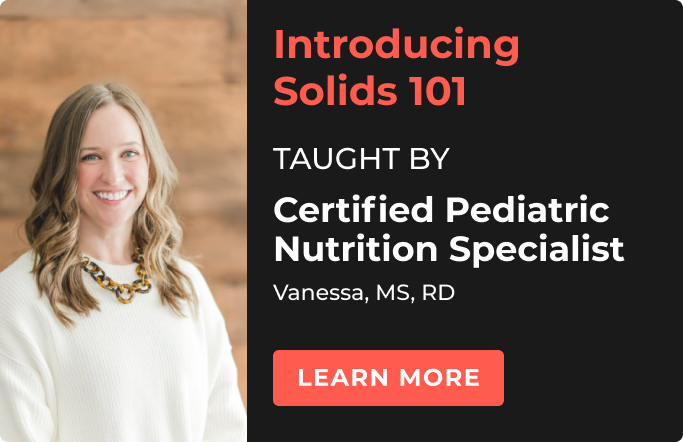
If you’ve decided to start your baby on solids using Baby Led Weaning (BLW), but aren’t sure where to start, look no further. Below we’ll go through some of the basics of Baby Led weaning and the best first baby led weaning foods to start with.
First, let’s quickly talk about the right time to start introducing solid foods to your baby. The official recommendation from AAP is 6 months of age. But remember, every baby is different so make sure you talk to your healthcare provider first. You never want to introduce solid food before 4 months of age, and always wait until 6 months old for Baby Led Weaning.
In addition to waiting until the recommended age, you also want to look for certain signs that your baby is ready. The signs your baby is ready for solid foods are:
- They can hold their head up independently
- They can sit upright on their own or supported
- They’ve doubled their birth weight or weigh ~ 13 pounds
- They are showing interest in solid foods by mimicking chewing/biting, reaching for food, or watching you eat
- They can move food from the front of their mouth to the back of their tongue

What is Baby Led Weaning?
This feeding approach is becoming increasingly popular, and teaches the infant to chew first, then swallow. During this method, parents offer soft solids and table food first, and the baby feeds themselves with their hands vs. offering traditional purees via a spoon.
What types of food should I start with?
Babies can eat a wide variety of foods using this method, but there are some common baby led weaning foods that are best to start with. Remember you want to encourage your child to eat a variety of foods from all food groups and respect their hunger cues— don’t force it!
Below are 13 easy foods to start your little one’s Baby Led Weaning journey:
Starches:
- Lightly toasted strips of bread or Pita
- Plain cooked pasta
- Sticky rice rolled into a log form
Protein:
- Cooked meat or poultry in large strips
- Meatballs (serve whole soft meatballs, no smaller than a golf ball, or cut large meatballs in half)
- Lentil or Bean smashed into patty form
- Bone-in meat (baked)
Vegetables:
- Corn on the cob, cooked with kernels removed
- Steamed broccoli
- Baked sweet potato wedges
Fruit:
- Sliced avocado (try rolling in infant cereal for an easier grip!)
- Whole Bananas
- Peaches. Cut in half with pit removed (you can keep the skin on or peel and roll in infant cereal for grip), or served mashed.
While the focus certainly should be on what foods to give your baby, there are some foods you’ll definitely want to avoid, including: honey, hard or sharp foods, cow’s milk (until 1 year of age) and common choking hazards (hot dogs, grapes, whole nuts, dried fruit), and added sugar or salt.
For more help on getting your baby started on solids, other foods to avoid, and feeding schedules, check out our online class, Introducing Solids 101: The Ultimate Guide to Getting Started. Registered Dietitian and board certified specialist in pediatrics, Vanessa Thornton will walk you through infant nutrition guidelines, suggested meal plans, fluid intake recommendations, how to introduce allergens and more. Plus, watch real babies try some of these recommended starter foods for the first time, so you can see what it looks like AND notice the difference between gagging and choking.



